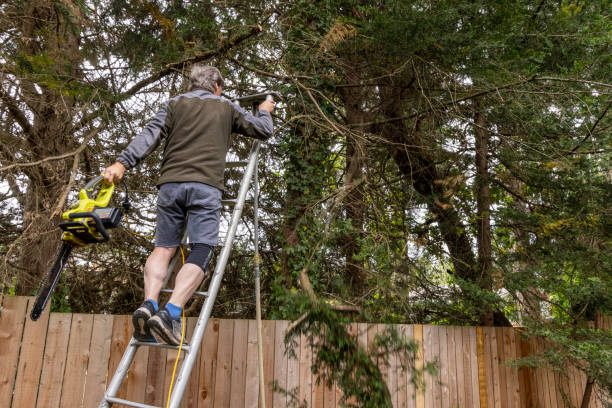When a tree emergency strikes, it’s crucial to know your first steps to ensure safety and minimize damage. You should assess the situation for immediate hazards like downed power lines or structural damage. Keeping a safe distance is vital, but what comes next? Contacting local emergency services is essential, but how do you communicate effectively and ensure they understand the full scope of the issue? And beyond the immediate crisis, what preventive measures can you take to avoid future emergencies? Understanding these steps can make all the difference. Let’s explore how to handle these situations comprehensively.
Assessing the Situation
When faced with a tree emergency, the first crucial step is assessing the situation to determine the severity and potential risks. You need to evaluate the area around the tree quickly. Look for downed power lines, damaged property, or any immediate hazards. If the tree has fallen onto a structure or vehicle, note the damage’s extent.
Next, check for any potential risks to people in the vicinity. Are there branches that could still fall or a tree leaning precariously? If you see any signs that the tree could cause further harm, cordoning off the area is vital to prevent accidents.
It’s also essential to identify the type of tree and its condition. Is it a large, healthy tree or a smaller, decayed one? Understanding this helps gauge the complexity of the situation. Take a moment to observe any environmental factors like strong winds or heavy rain that might exacerbate the problem.
Contacting Emergency Services
In any tree emergency, it’s crucial to promptly contact emergency services to ensure everyone’s safety and get professional help on the scene. Start by dialing your local emergency number, typically 911 in the United States. Clearly explain the situation, including the location, the type of tree involved, and any immediate dangers, such as downed power lines or blocked roads.
Stay on the line until the dispatcher has all the necessary information. They might advise you on immediate actions to take while waiting for help. Don’t attempt to handle the situation yourself, especially if there’s a risk of injury or further property damage.
Once you’ve contacted emergency services, ensure everyone stays safe from the tree and any associated hazards. If the tree has fallen on a structure, wait to enter the building until professionals deem it safe.
If the tree emergency involves power lines, inform the dispatcher so they can alert the utility company. Power lines pose a significant danger; only trained professionals should handle them. You minimize risks and ensure a swift, coordinated response by promptly contacting emergency services.
Preventive Measures
One of the most effective ways to handle tree emergencies is by taking preventive measures. Regularly inspect your trees for signs of disease, decay, or structural issues. Look out for dead branches, fungal growth, and cracks in the trunk. If you spot any problems, don’t wait—call a certified arborist to assess and address the problem.
Next, keep your trees well-maintained. Pruning dead or weak branches can prevent them from falling during a storm. Hire a professional for larger trees, as improper pruning can cause more harm than good. Also, consider cabling or bracing if a tree has multiple trunks or weak branches.
Watering and fertilizing your trees helps them stay healthy and resilient against pests and diseases. However, avoid over-watering or over-fertilizing, as this can lead to root rot or other issues. Mulching around the base can protect roots and maintain soil moisture.
Lastly, be mindful of where you plant new trees. Avoid placing them too close to structures, power lines, or other trees. Proper spacing allows for healthy growth and reduces the risk of future emergencies. Taking these steps can save you time, money, and stress in the long run.

